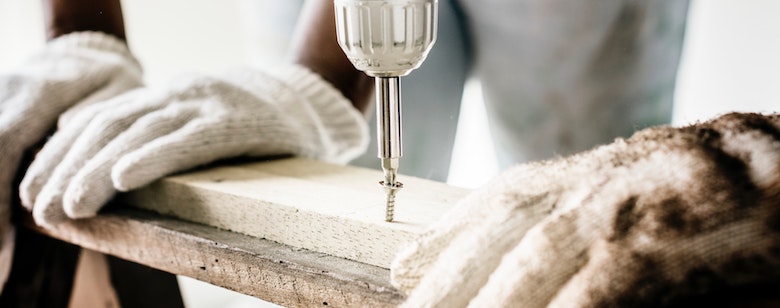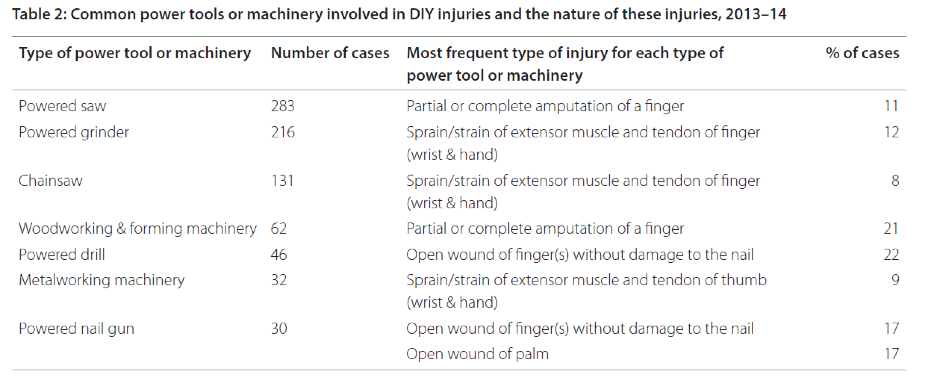
When starting a DIY project, you can spend a lot of time considering what materials to use or what new tool you need to buy, but you should also spend time making sure your workspace will be safe.
A study published in 2017, found 3,300 people were hospitalised in Australia as a result of a DIY injury due to a fall or contact with tools (Australian Institute of Health and Welfare 2017; DIY injuries fact sheet). That’s a rate of 13 cases per 100,000 population.
To help make sure your DIY activities don’t result you being added to these statistics, we have created the…
Timber Safety Guide for DIYers:
Wear the Right Protection
When working with any type of timber, treated or not, you should be wearing gloves, a dust mask and eye protection. If working in summer you should also be sun safe by covering up and wearing a hat, sunscreen and sunglasses.
Wash your hands
After you have finished working you should wash your hands thoroughly before smoking, eating or using the toilet. Don’t eat, drink or smoke in the work area as you may inhale or eat the dust.
Practice Safe Lifting
Timber can be heavy, so make sure that you are using the right techniques when lifting it so that you don’t hurt yourself. Spread your feet wide, bend at the knees and keep your back straight. If the timber is too heavy to lift on your own, ask for help. Muscle strain or injury is a common DIYers injury.
Don’t Get Distracted
When you are working with timber a simple distraction can result in a serious injury. Before responding to an interruption even if it’s just a text message or someone calling your name, make sure that you finish the cut you are making or the action you are performing with a power tool. Don’t take your attention away until the task has been completed and the tool has been turned off.
Don’t Build Tired
DIY projects are often started with a hard deadline in mind. It could be Christmas or a family birthday that puts the pressure on to work until late into the night and cut back on your sleep. However, the resulting fatigue can impact your alertness, reduce your reaction times and affect your ability to make good decisions. None of these things combine well with a power tool or heavy building materials.
Professor Drew Dawson, an internationally acclaimed sleep scientist believes if people have less than six hours sleep a night, they are at about double the risk of an accident or injury (www.safeworkaustralia.gov.au).
Tools and Alcohol Don’t Mix
For the same reasons above, it is unsafe to do any building if you are under the influence of alcohol. Wait until the tools are away before having an alcoholic drink.
Stay Hydrated
Dehydration is always a risk when working hard outside in summer. One of the best ways to avoid this is to drink plenty of water even if you don’t feel thirsty. Try and stay out of the sun especially when the sun is at its strongest. Drinking cold drinks and eating smaller, cold meals, such as salads and fruit, can also help you to keep cool. Other things to do include wearing light-coloured and loose-fitting clothes made from natural fibres and taking cool showers or baths.
Don’t Burn Leftover Timber
You should not burn any treated timber off-cuts. Dispose of them in a safe manner so no one else can take them and use them as firewood. Also, you should not use your timber off cuts for composting or mulching. For more info see our article on timber disposal.
Know Your Tools
With any new tools, make sure you understand how to use them safely before you start your project. And yes, that means reading the instructions prior to turning them on. If you haven’t used something for a while, check that the there are no broken pieces, blunt blades or frayed cords before you start work. And always try to cut away from your body.
Be careful with ladders
The research mentioned earlier, found falling on or from a ladder was the most common cause of injury to DIYers, accounting for more than one-third of injuries and in approximately 3 out of 5 of these falls resulted in fractures. If you are taking medication or suffer from dizzy spells do not climb a ladder. Ask for help.
Building with timber is rewarding and fun, but like any activity involving power tools, heavy materials or heights, it is crucial to ensure that you follow safe working practices and always be aware of any hazards where you are working and clean-up when you are finished.
 Source: Australian Institute of Health and Welfare 2017; DIY injuries fact sheet
Source: Australian Institute of Health and Welfare 2017; DIY injuries fact sheet
